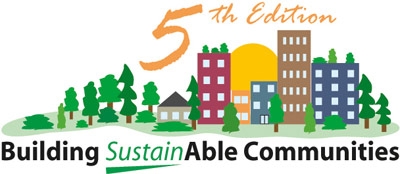Sustainable Rainwater Management in the District of Sooke: What Does It Look Like?
2012 Building SustainAble Communities Conference showcases innovation
The conference includes a special day-long session devoted to sustainable water management issues. The Rainwater Panel will present a series of ‘vignettes’ to showcase the experience of local governments that are BC leaders in innovation. The vignette about the District of Sooke features a precedent-setting and watershed basin approach to rainwater management.
District of Sooke’s Rainwater Management Plan
The District of Sooke on Vancouver Island has taken a proactive approach to wastewater and rainwater management and is recognizing the significance of environmental protection of the region. Sooke is the first community in British Columbia to integrate both Sanitary and Rainwater LWMPs (Liquid Waste Management Plans). The plan requirements provide clear direction to the District of Sooke to ensure that:
- Municipal rainwater infrastructure is developed in a manner that will result in healthy watercourses and a healthy near shore marine environment;
- Watershed based management approaches implemented to protect the District of Sooke’s watersheds;
- Low impact development techniques are employed to maintain, and where possible restore the pre-development hydrologic regime of urbanized and developing watersheds;
- A green infrastructure approach to rainwater management is taken to provide for cleaner air through well treed riparian zones and streetscapes; and
- Regulatory policies, guidelines and options are discussed on an ongoing basis.
“The District of Sooke has exceeded provincial requirements for liquid waste management and created a rainwater management plan that makes protecting water quality a guiding principle in land use decisions,” states Laura Byrne, the District’s project manager for plan development.
 “Because our rainwater management plan is outcome-oriented, it has stayed true to Stormwater Planning: A Guidebook for British Columbia. The plan works on three principles: protect existing water quality, prevent future damage, and remediate areas that may already be damaged. The District aims to improve water quality in Sooke Harbour and the Sooke Basin to the point where a longstanding ban on shellfish harvesting can be lifted.”
“Because our rainwater management plan is outcome-oriented, it has stayed true to Stormwater Planning: A Guidebook for British Columbia. The plan works on three principles: protect existing water quality, prevent future damage, and remediate areas that may already be damaged. The District aims to improve water quality in Sooke Harbour and the Sooke Basin to the point where a longstanding ban on shellfish harvesting can be lifted.”
“To achieve the community vision for healthy streams and harbour, the District encourages green infrastructure for rainwater capture and also encourages use of the Water Balance Model. In fact, the draft Subdivision and Development Standard Bylaw includes a requirement for developers to employ the Water Balance Model for all developments, regardless of the number of lots. Sooke recognizes that the water balance methodology links rainfall to streams, and this is how we will protect our streams,” concludes Laura Byrne.



